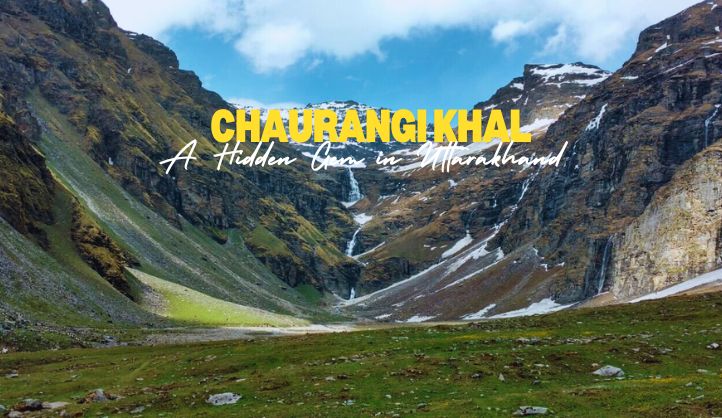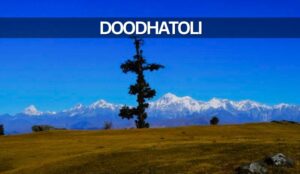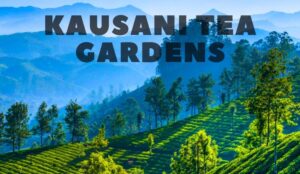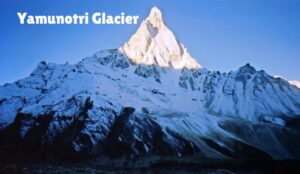Chaurangi Khal is one of the most remarkable trekking spots in Uttarkashi that gives trekkers a challenging yet rewarding high-altitude adventure. This stunning trek lies in Uttarakhand’s mountainous heart and combines untouched natural beauty with technical hiking challenges. Outdoor enthusiasts from all over India come here to test their skills. The trail welcomes both experienced trekkers and determined beginners who want to push their limits.
Our detailed guide provides everything you need to know about getting to Chaurangi Khal, route options, and preparation tips to make your trek successful. You’ll discover the ideal seasons to visit, ways to reach there, and the gear you’ll need. The guide also shows you how to share your adventures on Instagram and Facebook and connect with other trekkers through online groups and communities to plan your trips better.
Getting to Chaurangi Khal
Chaurangi Khal sits beautifully in Uttarakhand’s Himalayan range and opens the path to many scenic treks and natural wonders. This complete guide shows travelers everything they need to know about teaching and learning about this pristine destination.
Location and accessibility
Chaurangi Khal lies in Uttarkashi district’s northeastern region and combines easy access with untamed wilderness. The area serves as a gateway to multiple trekking routes. The popular Nachiketa Tal trek starts just 3 kilometers from here.
Travelers from all parts of India can reach this destination through well-maintained roads. The scenic 30-kilometer drive from Uttarkashi town to Chaurangi Khal takes you through lush forests filled with Pine, Oak, and Rhododendron trees.
The best time to visit
Chaurangi Khal welcomes visitors during these ideal seasons:
- Summer (April to June): The temperature stays between 5°C to 20°C and creates perfect conditions for trekking activities
- Post-monsoon (September to October): The skies remain clear with vibrant greenery that follows the rainy season
- Spring: The trails showcase beautiful Rhododendron blooms alongside numerous wildflowers
Safety concerns make the monsoon season (July to September) unsuitable for visits due to landslides and slippery trails. The winter months (November to March) bring extreme cold and snow blockages that only experienced winter trekkers should attempt to navigate.
Transportation options
A trip to Chaurangi Khal requires planning with multiple transportation modes:
| Route Segment | Mode of Transport | Cost/Duration |
|---|---|---|
| Delhi to Uttarkashi | Bus/Train | 6.5 hours |
| Dehradun to Uttarkashi | Shared cab | ₹350 |
| Uttarkashi to Chaurangi Khal | Local taxi | ₹80 (1-hour trip) |
Jolly Grant Airport in Dehradun serves as the nearest airport, while Dehradun and HaridwarHaridwar Travel Tips | Complete Travel Guide host the closest railway stations. Travelers can take private taxis or local buses from these locations to reach Uttarkashi. The trip from Dehradun to Uttarkashi covers 140 kilometers and takes about 6.5 hours through the Rishikesh route.
Travelers can choose between two routes from Dehradun to Uttarkashi: one through Landour and Suwakholi, and another via Rishikesh. Most travelers prefer the Rishikesh route that passes through Landour, Suwakholi, and Chinyalisaur. Budget travelers will find public transport convenient, as regular bus services run between Dehradun and Uttarkashi.
Trekking Routes and Difficulty Levels
Chaurangi Khal’s trekking trails provide multiple routes suitable for all skill levels. This makes it an ideal destination for adventure enthusiasts.
Popular trekking paths
This region boasts several distinctive trekking routes that provide unique adventures. Trekkers typically start their journey from Bhatwari and continue through Malla and Silla Village. Adventure enthusiasts looking for extended expeditions can take the Kamad route, which covers 48 kilometers through Ghodakot and Kush Kalyani.
The signature Chaurangi Khal route follows this sequence: Chaurangi → Harunta → Belak → Jorai Bugyal → Kush Kalyan Bugyal → Kyarki Bugyal → Lam Taal → Sahastra Tal
Terrain and elevation details
The trek’s terrain varies by a lot throughout its different sections. The forest trail starts from the beginning and continues until Belak, where trekkers find vast meadows called Bugyals. Several water bodies dot the route, including:
- Arjun Tal
- Pari Tal
- Bhim Tal
- Draupadi Tal
- Lamb Tal
- Mamle Tal
The trek becomes tough especially when you have to cross Chuli La Pass. Trekkers need 2-4 hours to hike through deciduous and oak forests. The terrain gets easier after crossing the pass, though some rocky and steep sections remain alongside the meadows.
Fitness requirements and preparation
This moderately challenging trek just needs good preparation and specific fitness levels. Here are the key requirements you should think over:
- Medical Preparation
- Get a full-body checkup before departure
- Take time to acclimatize at basecamp to prevent AMS
- You should avoid this trek if you have anemia, asthma, or cardiac issues
- Technical Skills
- Knowledge of weather patterns
- First aid skills
- Simple geography concepts
- Rope knot skills
- Basic rock climbing abilities
The higher trails give you amazing chances to spot wildlife in a variety of forms. You might see Bharal, Ibex, Himalayan Bear, Leopard, and Pika since these areas have minimal human presence. Stay alert while walking on narrow stone ridges near the Dharamshala campsite.
A good grasp of the trek route map and Sahastra Tal’s geography will help you stay safe and make the most of your journey. The final stretch to Sahastra Tal is the most challenging part that needs solid physical fitness and mental strength.
Natural Attractions and Scenic Views
Chaurangi Khal’s untouched wilderness captivates visitors with its rich biodiversity and stunning views that create a perfect haven for nature lovers and photography enthusiasts.
Flora and fauna of the region
The Chaurangi Khal forest features an impressive botanical diversity with 231 species of plants. These include 227 angiosperms and 4 gymnosperms in 69 families and 159 genera. Ten major families shape the region’s rich flora, including Lamiaceae, Asteraceae, and Rosaceae.
The dense forest canopy has mainly:
- Oak and rhododendron groves supporting diverse bird species
- Pine and deodar stands harbor abundant wildlife
- Mixed forest zones with seasonal flowering species
Nature enthusiasts can observe these species in their natural habitat:
| Common Species | Rare Sightings |
|---|---|
| Himalayan langurs | Leopards |
| Barking deer (Kakad) | Himalayan bears |
| Porcupines | Foxes |
| Various bird species | Mountain wildlife |
Panoramic vistas along the trek
The natural beauty of this area creates breathtaking viewpoints for visitors. Mt. Mandanbhitti and its neighboring peaks provide a magnificent backdrop throughout the experience. Nature’s wonders in this region include:
- Pristine Lakes: Clear waters filled with abundant fish life
- Alpine Meadows: Wide open spaces that showcase spectacular mountain views
- Dense Forests: Serene paths that wind through mysterious woodlands
Photography opportunities
This region is a photographer’s dream all year round, and each season brings something special to capture. The trail becomes magical in spring when blooming rhododendrons and wildflowers paint the perfect foreground for your shots.
Best photography locations include:
- A peaceful lake with a small temple nestled in the forest
- Breathtaking viewpoints that showcase snow-capped Himalayan peaks
- Beautiful meadows where wildlife grazes against mountain backdrops
The best shots come during the golden hours at sunrise or sunset. Nature photographers will find endless inspiration in the region’s landscapes which range from thick forests to open meadows. These spots create perfect lighting conditions and compositions. Many photographers share their work on Instagram and Facebook to connect with other nature lovers and help showcase the region’s natural beauty.
This area plays a crucial role in the Indian Himalayan Region’s protected network. The network’s impressive coverage spans 5 biosphere reserves, 28 national parks, and 98 wildlife sanctuaries, stretching across 51,899.238 km of land.
Essential Gear and Packing Tips
The right preparation and gear selection are the foundations of a successful trek to Chaurangi Khal. You must think over each item you pack carefully, as the challenging terrain and changing weather conditions just need specific equipment.
Clothing and footwear recommendations
Your comfort during the trek depends on a good layering system. Experienced trekkers suggest these essential clothing items:
| Layer Type | Items Required | Purpose |
|---|---|---|
| Base Layer | 2 wicking T-shirts, 2 hiking pants | Moisture management |
| Insulation | Fleece jacket, down jacket | Temperature regulation |
| Outer Shell | Waterproof jacket, rain poncho | Weather protection |
| Accessories | Sun hat, wool hat, waterproof gloves | Environmental protection |
Good boots can transform your trek from a painful experience into an enjoyable one. You should invest in sturdy hiking boots that support your ankles well and break them in before your trip. Your boots need waterproofing and a reliable grip that works on different types of terrain.
Camping equipment checklist
Here’s what you need for camping at Chaurangi Khal:
- Shelter and Sleep System
- Tent rated for high-altitude conditions
- Sleeping bag (rated for -10°C)
- Sleeping pad for insulation
- Inflatable pillow for comfort
- Cooking and Hydration
- Water storage capacity of 2-3 liters
- Stove designed for high-altitude cooking
- Water filters and purification tablets
Your Instagram and Facebook posts will need portable power banks and weather-resistant camera gear to capture this experience. Many trekkers use Facebook Groups and Marketplace to share their tips and help others plan their adventures.
First aid and safety essentials
A complete first aid kit is vital to handle medical emergencies in remote locations. The kit should have:
- Simple wound care supplies
- Snake bandages
- Blister prevention and treatment materials
- Pain relief medications
- Prescription medications
- Triangular bandages
Your safety equipment should have a headlamp with extra batteries, emergency blankets for unexpected overnight stays, and a satellite communication device for remote areas. You’ll also need a multi-tool knife that has tweezers and a scalpel.
You should practice using your first aid supplies before the trip and know your kit’s contents well. Check medication expiration dates and replace used items regularly.
Well-maintained gear can save your life. Regular inspection of your equipment is necessary, especially your boots and safety gear. Many experienced hikers connect through Facebook Groups dedicated to Chaurangi Khal trekking. They share gear recommendations and maintenance tips through platforms like Messenger and Threads.
Hand warmers are a great way to get through cold nights at higher altitudes. Dry bags and compression sacks help organize gear and protect essential items from moisture. You should also carry simple repair tools and spare parts for critical equipment to stay self-sufficient throughout the trip.
Conclusion
Chaurangi Khal offers an incredible adventure that rewards your careful planning with memories to last a lifetime. The region’s pristine beauty combines easy access from major cities with challenging trails and breathtaking Himalayan views. Adventurers of all skill levels can explore this natural wonderland through multiple trekking routes that showcase its rich biodiversity and stunning landscapes.
A successful journey to Chaurangi Khal just needs proper preparation, the right gear, and respect for the weather conditions. Nature enthusiasts and photographers will appreciate the region’s 231 plant species, abundant wildlife, and panoramic mountain views year-round. The area’s dense oak forests, high-altitude passes, and crystal-clear lakes create amazing adventures for visitors who follow safety protocols and bring the right equipment.
FAQs about Chaurangi Khal
1. What is Chaurangi Khal?
Chaurangi Khal is a trekking destination located in the Pithoragarh district of Uttarakhand, India. Situated at an altitude of approximately 3,100 meters (10,170 feet), it offers stunning views of the Himalayan ranges and lush green valleys.
2. How do I reach Chaurangi Khal?
To reach Chaurangi Khal, you can drive to the town of Thal, which is the starting point for the trek. Thal is well-connected by road from major cities like Pithoragarh and Almora. From Thal, you will embark on a trek that takes you through scenic landscapes and forests.
3. What is the best time to visit Chaurangi Khal?
The best time to trek to Chaurangi Khal is during the spring months (March to June) and autumn months (September to November). Spring offers blooming rhododendrons, while autumn provides clear skies and stunning views of the mountains.
4. Is the trek to Chaurangi Khal suitable for beginners?
Yes, the trek to Chaurangi Khal is moderately challenging, making it suitable for both seasoned trekkers and beginners with a reasonable level of fitness. However, it’s advisable for beginners to prepare adequately and possibly trek with a guide.
5. What should I pack for the trek?
When trekking to Chaurangi Khal, you should pack essential items such as comfortable trekking shoes, warm clothing, a rain jacket, a backpack, water bottles, energy snacks, a first-aid kit, and trekking poles (if needed). Don’t forget your camera to capture the breathtaking views!
6. Are there accommodations available near Chaurangi Khal?
While there are no formal accommodations directly at Chaurangi Khal, trekkers can find lodging options in nearby towns like Thal or Pithoragarh. Local homestays can also provide an authentic experience of Kumaoni hospitality.





